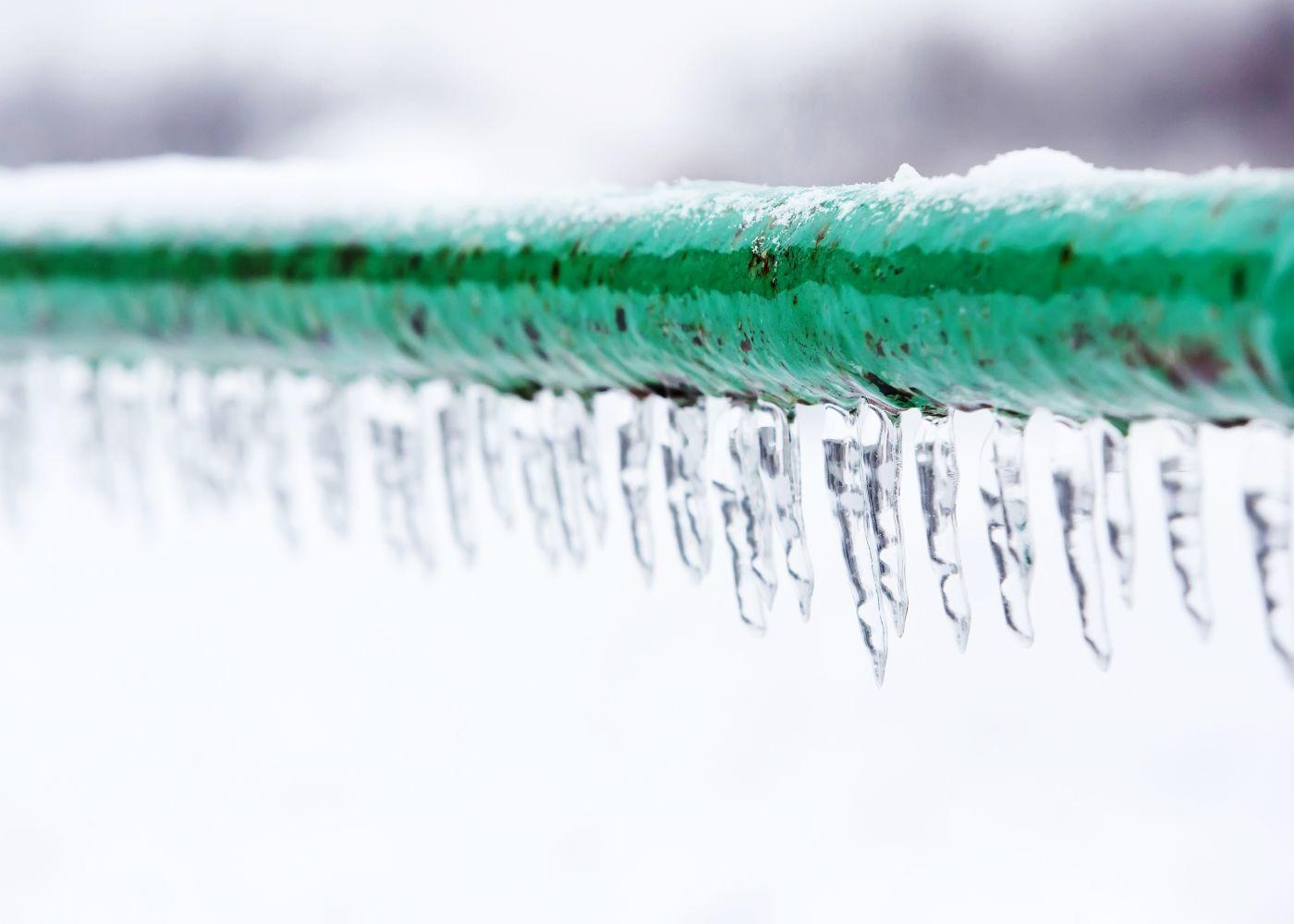Frozen pipes are a homeowner’s worst nightmare during a cold snap. But before you panic, there are steps you can take to thaw the ice and minimize damage. Here’s what to do when your pipes freeze:
1. Shut Off the Water Supply
This is crucial to prevent flooding if the pipe bursts. Locate your main water shut-off valve, usually near the street or where water enters your house. Turn the valve clockwise until it stops.
2. Locate the Frozen Pipe
Common areas for frozen pipes include exterior walls, crawl spaces, under sinks, and in attics. Look for any exposed pipes with frost or condensation. Sometimes, the blockage might not be visible, but cold spots on walls or a lack of water flow can give you clues about where the problem is.
3. Open Faucets
Once you’ve found the frozen section, open the faucets connected to that pipe. This will relieve pressure and allow water to flow out as the ice melts. A small trickle is sufficient. By doing this, you provide an outlet for the steam that forms as the ice melts, which can prevent pressure buildup and potential pipe bursts.
4. Apply Heat Gently
Here’s where you can thaw the ice. Use a hairdryer on a low setting, a heating pad wrapped around the pipe, or towels soaked in hot water. Never use an open flame or anything that could cause the pipe to overheat. For metal pipes, you can also use electrical heating tape. Start from the section closest to the faucet and work your way back. This method ensures that any steam can escape through the open tap.
5. Check for Leaks
Once the ice has melted, turn the water back on slowly and check for leaks at the frozen section and all pipe connections. A small leak can quickly turn into a major problem. Monitor the pipes for a while after the thawing process to ensure there are no hidden or slow leaks.
Call a Plumber When:
- You can’t locate the frozen pipe. Sometimes, the pipes may be hidden behind walls or other structures, making it challenging to find the exact spot.
- The frozen area is inaccessible. If the pipe is in a hard-to-reach place, professional tools and expertise are required.
- You suspect a burst pipe. Signs of a burst pipe include bulging, discolored pipe sections, or spraying water.
- You can’t thaw the pipe yourself. Persistent ice blockages might need specialized equipment.
- You notice a leak after thawing. Even small leaks can indicate more severe issues.
Preventing Future Freezes
Insulate Your Pipes
Proper insulation is key to preventing pipes from freezing in the first place. Use foam pipe insulation or heat tape on exposed pipes in unheated areas.
Keep Your Home Warm
Maintain a consistent temperature throughout your home. During particularly cold spells, leave cabinet doors open to allow warm air to circulate around pipes, especially those located under sinks or near exterior walls.
Drip Faucets During Cold Weather
Letting your faucets drip slightly can keep water moving in the pipes, reducing the chance of freezing. This is particularly effective for pipes that are located in vulnerable areas.
Seal Cracks and Openings
Inspect your home for cracks or openings where cold air can enter and seal them properly. This will help keep the warmth in and the cold out, providing extra protection for your pipes.
Conclusion
By following these steps, you can hopefully resolve a frozen pipe situation without major damage. But if you’re unsure or uncomfortable tackling the problem yourself, don’t hesitate to call a professional plumber. Their expertise can save you time, money, and a major headache. Even if a frozen pipe thaws without leaking, it may have been weakened. Consider calling a plumbing service to inspect the pipes for potential damage to prevent future issues. Consider calling Fast Trak Plumbing And Drain to inspect the pipes for potential damage to prevent future issues.
FAQs
What should I do if I can’t find the main water shut-off valve?
If you can’t locate your main water shut-off valve, contact a local plumber or your water utility provider for assistance. They can guide you on where to find it or send someone to help.
Can frozen pipes cause long-term damage?
Yes, frozen pipes can cause long-term damage even if they don’t burst immediately. The freezing and thawing process can weaken the pipe material, leading to leaks or bursts in the future.
Is it safe to use a space heater to thaw pipes?
Using a space heater can be effective, but it’s essential to use it safely. Ensure the heater is kept at a safe distance from flammable materials and never leave it unattended.
How can I tell if my pipes are at risk of freezing?
Pipes located in unheated areas, near exterior walls, or in poorly insulated spaces are most at risk. Signs of freezing include visible frost on the pipes, extremely cold water, or reduced water flow.
Should I attempt to thaw the pipe myself or call a plumber immediately?
If you feel confident and the frozen pipe is accessible, you can attempt to thaw it yourself using the methods mentioned. However, if you’re unsure or if the situation seems severe, it’s best to call a plumber immediately.

